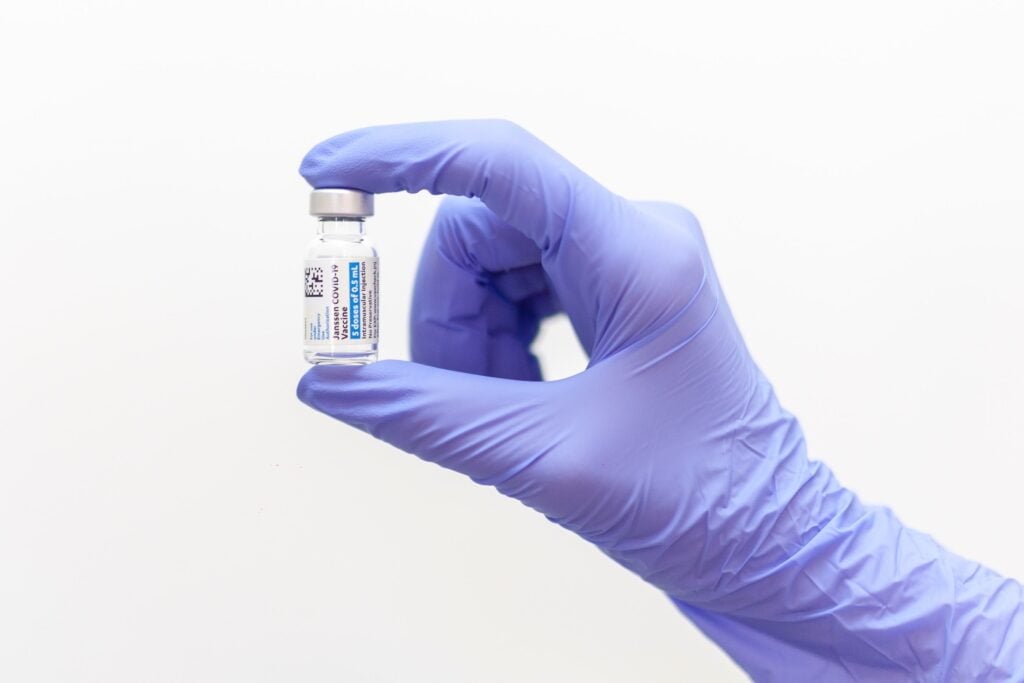While Australia has avoided the worst of the global pandemic, it has only been because of a combination of geography, luck, and hard border closures. As time goes on, it is evident that the Federal Government mismanaged Australia’s quarantine program, and completely neglected to plan and execute a vaccination roll-out plan.
The Australian Federal Government must acknowledge its failings, and take immediate steps to mitigate spread of the virus through effective quarantine facilities as well as engage with experts from academia, health and private industry to develop and implement a mass vaccination roll-out plan.
Dr Roger Yazbek, Health Team Leader
What’s needed right now
| 1 | Dedicated quarantine facilities, with full-time staff to oversee day to day facility management and security, as well as regular testing of overseas arrivals |
| 2 | Travellers provided with daily COVID-19 home testing kits on exit from quarantine |
| 3 | Broader availability of COVID-19 home testing kits, particularly for those undergoing home quarantine |
| 4 | An independent expert committee (not military personnel) that includes social scientists, and public health professionals to develop and advise on the implementation of a mass vaccination plan for Australia |
What’s needed longer term
| 5 | A Royal Commission into Australia’s pandemic response, covering everything from the Ruby Princess to vaccine procurement and distribution |
| 6 | An Australian Centre for Disease Control that would be independent from Government and provide evidence based advice and guidance on health threats to Australia and undertake public health research. |
| 7 | A plan for investing in science and research to future proof Australia’s health |
| 8 | Investment in advanced vaccine manufacturing capability |
Border closures
In March 2020, at the outset of the COVID-19 pandemic, the Federal Government announced travel bans to and from Italy, China and Iran. The escalating risk of the pandemic to Australia meant that on March 19th, PM Scott Morrison announced Level 4 travel restrictions for the entire world, effectively isolating Australia from the rest of the world.
Since then we have seen individual States announcing local border closures in attempts to manage and contain the spread of the virus within Australia. Whilst these decisions have been made based largely on health advice from public health professionals, it has not stopped their politicisation by State and Federal MPs. This political point-scoring not only undermined local efforts to contain virus spread, but it also actively undermined trust in the scientific expertise of Australia.
A centralized and independent Australian Centre for Disease Control (ACDC) could remove the politics from these decisions, applying a central set of guidelines and advice applicable to all States, while still permitting the States autonomy to implement specific measures to their unique situations.
Quarantine
During the early days of the pandemic, the Federal Government was faced with managing the quarantine of Australian’s returning from Wuhan, China. This should have been seen as an opportunity to develop a safe, secure and humane quarantine system for all future arrivals. Instead, the first ‘quarantine response’ was to send returning travellers from Wuhan, China to Christmas Island, where they were to quarantine for 2 weeks and pay for the associated expenses.
The Federal Government then switched to a combination of home & hotel quarantine arrangements. The standout example of poor early quarantine management was the Ruby Princess debacle. More than 2700 people were allowed to disembark a ship that contained individuals with ‘influenza like symptoms’, who proceeded to travel to various locations around the country. Since this early failure in border management, every State has reported instances of the virus breaching hotel quarantine facilities.

Hotels were never designed as public health quarantine facilities
In the face of a global pandemic, the Government has relied on hotel staff and part-time security officers to manage potentially infectious returning travellers. Without full-time, highly trained security staff and health professionals working in hotel quarantine, breaches were not a matter of if, but when.
It could be argued that at this stage in the pandemic, it is too late to construct and use a dedicated quarantine facility. However, given we have only achieved a vaccination rate just shy of 10%, continuing outbreaks and ongoing international arrivals, there is a strong argument to be made for the construction of dedicated quarantine facilities around Australia. Furthermore, the likelihood of future pandemic events means a dedicated quarantine facility would likely have future utility.
In the immediate short term, the Federal Government must take ownership of the failures of its hotel quarantine program, and implement immediate enhancements to staffing, security and testing, including the introduction of at home testing kits post-quarantine.
In February, the RACGP published their concerns about a lack of standards for hotel quarantine, highlighting factors such as inadequate ventilation, security and testing. An independent ACDC would have power to outline a set of consistent set of evidence based requirements and guidelines for a national quarantine program.
Vaccines

The Federal Government failed abysmally in both COVID vaccine procurement and delivery of vaccines into arms.
Despite having almost 12 months to prepare for their arrival, it has appeared at times as if the Federal Government has had no plan at all.
The original announcement about the procurement of the AstraZeneca vaccine happened in September 2020 and included not just the AstraZeneca vaccine, but also the University of Queensland/CSL vaccine partnership.
It has since emerged that the Government was offered 40 million doses of the Pfizer vaccine in July 2020, for a scheduled delivery in January 2021. For reasons that are unclear, this offer was rejected by the Morrison Government.
At times, it has seemed that the Government has been more concerned with trying to spin its messages, rather than actually deliver real outcomes. It seems the primary reason the Government committed only to the AstraZeneca vaccine was because they could speak to local manufacturing capacity, and support of local jobs, while at the same time taking every photo opportunity to pose with vaccine vials and local scientists
The mixed messaging from the Government and the media on vaccines has created an atmosphere of fear and uncertainty, and led to slow vaccine uptake and vaccine hesitancy. One only has to refer to comments from the Health Minister, Greg Hunt, who said “we’ve been very clear that, as supply increases later on in the year, there will be enough mRNA vaccines for every Australian”. This sort of comment only resulted in more people deciding to postpone their vaccination until their ‘preferred brand’ became available.
From the outset, we should have procured more than just one vaccine option for the entire country. We should have been manoeuvring to gain access to the Moderna and Pfizer options, and we should also have been seeking access to the Johnson & Johnson single jab vaccine.
The absence of a comprehensive vaccine roll-out plan is perhaps the most astonishing failure in this whole saga. This is even more astonishing when the Collaboration on Social Science and Immunisation published a vaccination strategy for COVID-19 in November 2020; however, this was not taken up by anyone in Government. The Australian Democrats strongly recommend that Government engage with these experts to transform our approach to vaccination, and rapidly increase vaccination numbers.
One of the major issues has also been our lack of manufacturing capacity for mRNA vaccines, and the lag time in deciding to establish this capacity. Australia should have been investing in research and manufacturing of new vaccine technologies 5 years ago, but the Federal Government has been ad hoc in its approach to supporting medical research and science in Australia. Even in the face of a global pandemic, the Government still hasn’t increased the budget of the National Health and Medical Research Council, which has remained stagnant for more than 10 years. Instead, the Government has thrown what can only be described as token dollars at ‘COVID’ projects, to give the façade of investing in research and development. Questions have been asked about the value of this investment, and perhaps a comprehensive audit should be taken to determine how this money was allocated in the first place. Ultimately, Australia needs to map out a comprehensive plan for investment into science and research. If we are truly the clever country, and want to establish a future economy that takes advantage of advanced manufacturing and biotech industries, then we need to start investing much more to boost our capacity.

